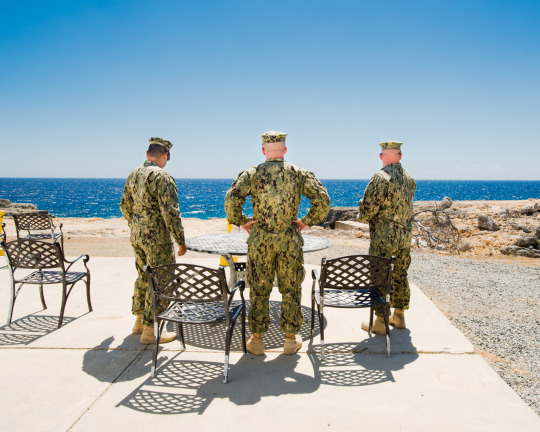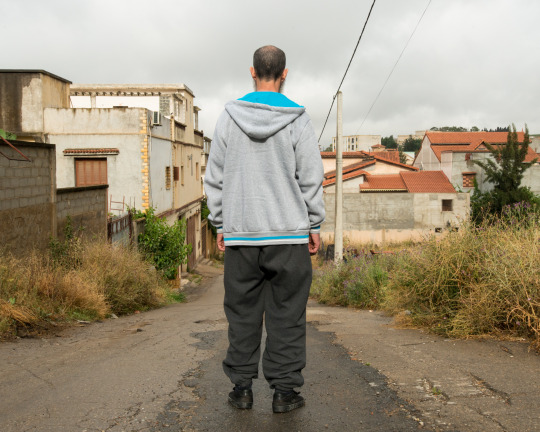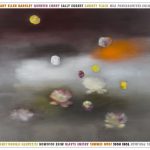Conversations | Debi Cornwall’s Book and Exhibition “Welcome to Camp America”
“Who is ‘us’ and who is ‘them?’ Whatever your response to this work, whether outrage or surprise, fear or compassion, that is the start of conversation.” – Debi Cornwall
Embroidered seamlessly together with letters, quotations, and affidavits in Arabic and English, Debi Cornwall’s book (Radius Books, 2017) and exhibition of photographs, Welcome to Camp America, casts an absorbing light on life at Guantánamo Bay and the growing diaspora of its cleared and released “detainees.” The vivid and colorful images present a powerful, bizarre juxtaposition between the carefree and restrictive spaces of guards and prisoners. They also give readers an inside look at objects and souvenirs at the Gitmo gift shop (like “I love Gitmo” lip balm) and those who have been released in countries far away from their homelands. Since 2002, Guantánamo Bay has held over 700 prisoners and Welcome to Camp America, deeply researched and visually telling, makes the viewer reflect on the dynamics of power, and who we consider as “other.”
Welcome to Camp America is fiscally sponsored by NYFA and has received numerous honors including being named the winner of the 2018 PDN Annual Publisher’s Choice Award, longlisted for the 2018 Kraszna-Krausz Foundation Book Award, and named as one of 2017’s ten best photo books in The New York Times Magazine by Teju Cole. Cornwall is also a 2017 recipient of the Harpo Foundation Visual Artist Grant.
Read our interview with Cornwall to learn more about her experience photographing Guantánamo Bay and mark your calendar to view her upcoming exhibition at the Philadelphia Photo Arts Center beginning June 14. You can also purchase your own copy of Welcome to Camp America here through Radius Books.
What: Welcome to Came America
Where: Philadelphia Photo Arts Center, 1400 N. American Street #103, Philadelphia, PA 19122
When: June 14 – August 25, 2018; Opening Reception & Artist Talk: June 14, 6:00 PM – 8:00 PM; Panel Discussion Rendered: Art, Wrongful Imprisonment and Guantánamo: June 28, 6:00 PM

Above: (First Image) ©Debi Cornwall; Kiddie Pool; 2015; 30×40" limited edition pigment print from medium-format negative hand-developed on site under watch of military censors; from the series “Gitmo at Home, Gitmo at Play,” exploring daily life at the U.S. Naval Station in Guantánamo Bay, Cuba, where military regulations forbid photographing faces, through the residential and leisure spaces of prisoners and guards; (Second Image) Headshot: Courtesy of Debi Cornwall
NYFA: What piqued your interest in capturing Guantánamo Bay through photographs?
Debi Cornwall: For 12 years, I had practiced as a civil rights lawyer representing innocent DNA exonerees in wrongful conviction lawsuits within the United States. When I stepped away from litigation and came back to photography, I chose to look at the men cleared and released from Guantánamo Bay because their struggles felt familiar. These men are going through something very similar to what my former clients face, but much more complicated, since Guantánamo’s survivors don’t have a court order declaring their innocence, and many will never return home. Instead, they must rebuild their lives in foreign countries where they know nobody and don’t even speak the language.

©Debi Cornwall; Prayer Rug with Arrow to Mecca, Camp Echo; 2015; 30×40" limited-edition pigment print from medium-format negative hand-developed on site under watch of military censors; from the series “Gitmo at Home, Gitmo at Play.”
NYFA: How did your civil rights law experience help you navigate the red tape associated with visiting and documenting Guantánamo Bay?
DC: The research and negotiation skills I developed as an attorney were invaluable as I developed Welcome to Camp America, from researching whom to ask for permission to visit the U.S. Naval Station in Guantánamo Bay, Cuba (known as “Gitmo”); to negotiating unprecedented permission to photograph with film under the military rules, which require photographers to work digitally in order to facilitate daily “Operational Security Review” by censors; to finding and connecting with released men, as well as researching appropriate funding partners.
NYFA: On your first visit to Guantánamo Bay, you were presented with 12 pages of rules for photographing and navigating the grounds. What were some of those rules? How did those limitations shape your work?
DC: I would be escorted by military personnel at all times while carrying a camera. I could not take any photographs of surveillance equipment, locking mechanisms, critical infrastructure, certain sections of coastline, or, most importantly, any faces. Even partial profiles would be deleted in Operational Security Review. Knowing I would never be shown what was happening behind closed doors, I decided to look at what I was being asked to see—my series “Gitmo at Home, Gitmo at Play” surveys the “fun” through images of the residential and leisure spaces of both prisoners and guards—and then adds context later.

©Debi Cornwall; Smoke Break, Camp America; 2014; 26×32" limited edition pigment print from digital photograph; from the series “Gitmo at Home, Gitmo at Play.”
NYFA: Were there any photographs that you took that were deleted, censored, or edited by the guards? Do you believe that this censorship and the lost photographs limit the viewer’s ability to grasp the experience at Guantánamo Bay?
DC: Yes. The frame just after Smoke Break, Camp America, was deleted by military censors because the soldier on the right had turned his head toward the camera, revealing his profile. It’s part of what motivated me to negotiate permission on my third and last trip to photograph with analog equipment, on film. The lawyer in me wanted evidence. Ironically, I think the military regulations made the series much more powerful. Meaning arises not only from what is shown, but what is not.
NYFA: You traveled to nine countries to photograph the diaspora of cleared and released “detainees” from Guantánamo Bay. What was the experience like for them to be photographed and interviewed? What was the experience like for you?
DC: I photographed each man as though he were still at Guantánamo Bay, subject to the military’s “no faces” rule. It’s a conceptual approach to conveying that the trauma persists long after the body is freed. The biggest challenge for me was to build trust with each of the 14 released men not as a lawyer representing them, but as an artist trying to convey a glimpse of their experience in order to invite a fresh look at Guantánamo Bay. We collaborated in choosing locations of relevance to their lives if they returned home, or emphasizing the disorientation of those transferred to third countries. But we always started just by being present together, and seeing what emerged. I’m so grateful to each of the men who agreed to be a part of this project.

©Debi Cornwall; Djamel, Berber (Algeria); Held: 11 years, 11 months, 18 days; Cleared: October 9, 2008 & May 8, 2009; Released: December 4, 2013; Charges: never filed In U.S.; Acquitted and exonerated at trial in Algeria; from the series “Beyond Gitmo,” comprising environmental portraits of 14 men cleared and released from Guantánamo Bay, now living in nine countries. Each portrait is made as though the released man is still there, subject to the military’s “no faces” rule for photographs.
NYFA: What do you expect your viewers to walk away with after seeing these photographs?
DC: I hope to engender curiosity. In layering meaning through the juxtaposed photographs, texts, and archival materials in the interactive design of my book, Welcome to Camp America: Inside Guantánamo Bay, and adding sound in exhibition, I’m looking to disrupt assumptions and provoke questions about our response to the “War on Terror,” acts taken in our names. Who is “us” and who is “them”? Whatever your response to this work, whether outrage or surprise, fear or compassion, that is the start of conversation.
NYFA: Why did you choose NYFA Fiscal Sponsorship?
DC: As this was my first project as an artist, I was not competitive for the major photography grants. And, my subject matter fell between the cracks of many foundations’ areas of interest. NYFA Fiscal Sponsorship was an invaluable resource, both as a public vote of confidence in the work, and in opening doors to funding partners who otherwise would not have been available to me. The vast majority of the funds I raised—which covered all of the photographic production and most of the book—were raised through NYFA. I have no doubt that the project would have been impossible to realize without NYFA Fiscal Sponsorship.
– Interview conducted by Priscilla Son, Program Associate, Fiscal Sponsorship & Finance
Are you an artist or new organization, and interested in increasing your fundraising opportunities through NYFA Fiscal Sponsorship? No-fee applications are accepted on a quarterly basis and the next deadline to apply is June 30. We also accept Out-of-Cycle Reviews year-round. Click here to learn more about the program and to apply. Sign up for our free bi-weekly newsletter, NYFA News, for the latest updates and news about Sponsored Projects and Emerging Organizations.





